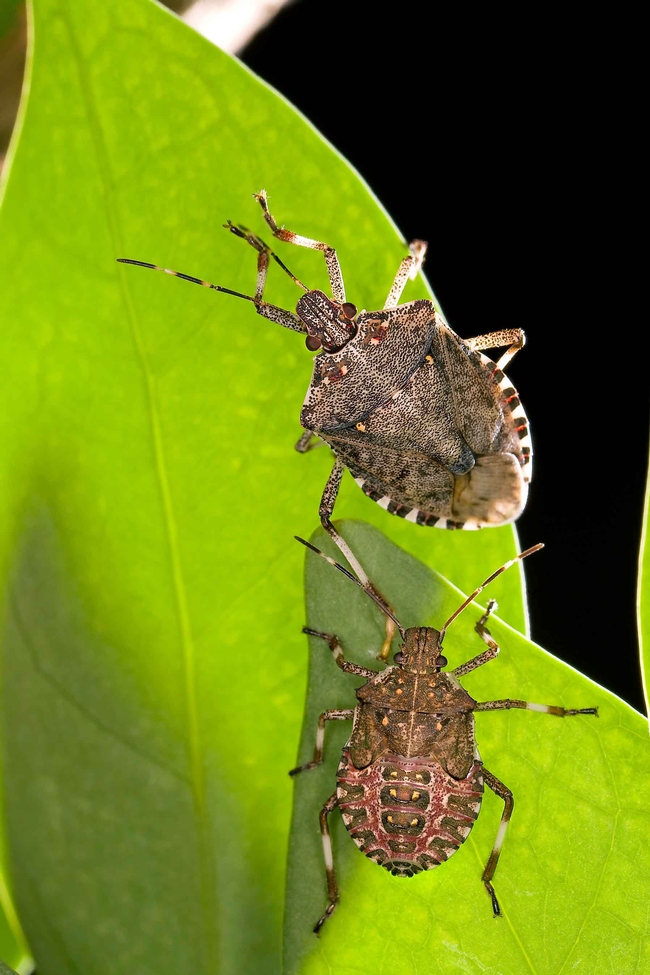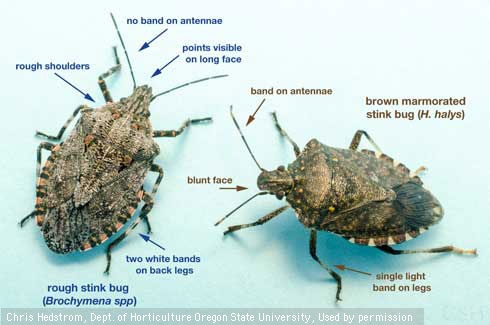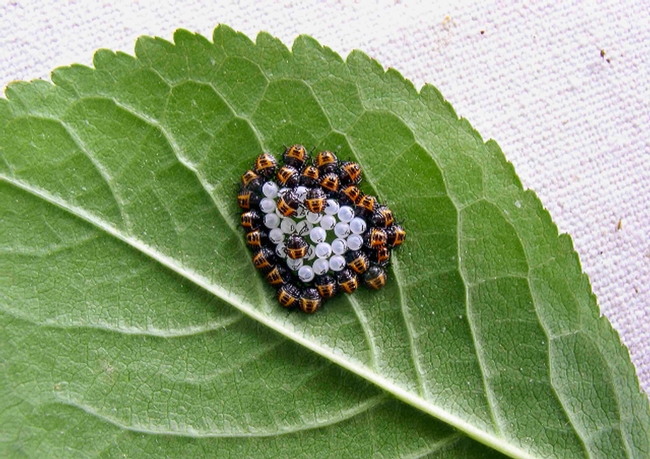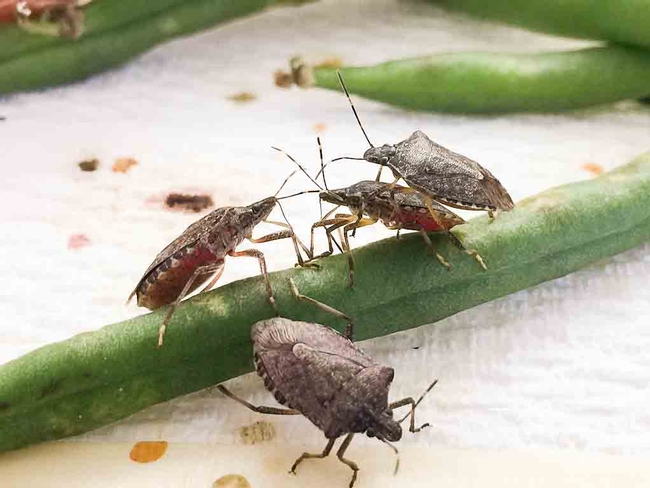As our weather warms, be on the lookout for the Brown Marmorated Stink Bug (BMSB). It's important to be able to recognize this voracious pest in order to prevent its spread.

This pest doesn't limit itself to the outdoors: because it likes warm conditions, in late summer and early fall it will seek shelter in the warm cavities between residential home walls, and even in cars. The first BMSB formally identified in Butte County was found crawling on the walls of the enclosed back porch of this writer's home in July of 2013. A few months later, I spotted one inside my car. Resist the urge to smash it: the stink bug earned its colloquial name for a very good reason. Making an early appearance, the BMSB has already been spotted in Chico this spring.
Stowed away on a cargo ship from Asia, the BSMB entered the US in the late 90s. According to a 2012 article in the Wall Street Journal, the US Department of Agriculture noted that this immigrant pest had spread to 36 states; in 2010 trade groups reported $37 million worth of damage to apple crops alone. In California a reproducing population was first found in the LA County areas of Pasadena and San Marino in 2006. The BMSB has since been detected in many other parts of the state, making its way north to Sacramento and Yuba City by 2013. Home gardeners can be of key assistance in preventing the spread of this exotic, invasive species.


Control and Management: Because the BMSB is a nuisance in and around the home, and poses real danger to commercial crops and ornamental plants, methods of control and eradication are being explored and tested all over the US.
Nuisance Control: A number of non-invasive methods are available to the homeowner seeking to rid walls and rooms of these bugs: direct a flashlight onto a pan of soapy water in a dark room which contains the bugs and watch them crawl or fly in and drown. Try sucking them into a hand vacuum cleaner (dedicated to this purpose) or shop vac; sweeping them into a bucket of soapy water; or place in Ziploc bag and freeze or squash them. Use silicone, caulk, or foam to seal the small narrow gaps by which they gain entry into homes, porches, and garages.
Management and Eradication Methods: The use of pesticides is not recommended, as they have not been proven to be effective for either small- or large-scale eradication. For the home gardener, be on the lookout: hand-pick the slow-moving, fairly large adult bugs and drop them into a bucket of soapy water. Hand vacuums can be effective in the garden, as can their natural enemies which include assassin bugs, earwigs, and green lacewing larvae. Birds may feed on adults and nymphs.

Keep an eye out in your home, your garage, and your garden for the Brown Marmorated Stink Bug so that you can help control the spread of this damaging pest. Pick it, trap it, drown it or vacuum it up: just don't step on it!
NOTE: for more information: UC IPM BMSB Pestnote; UC Riverside Center for Invasive Species Research; and Stop BMSB. For details on the BMSB and almonds, see Brown Marmorated Stink Bug Emerging as Significant Pest in Almonds - West Coast Nut (wcngg.com).
UC Master Gardeners of Butte County are part of the University of California Cooperative Extension (UCCE) system. To learn more about us and our upcoming events, and for help with gardening in our area, visit our website. If you have a gardening question or problem, email the Hotline at mgbutte@ucanr.edu (preferred) or call (530) 538-7201.